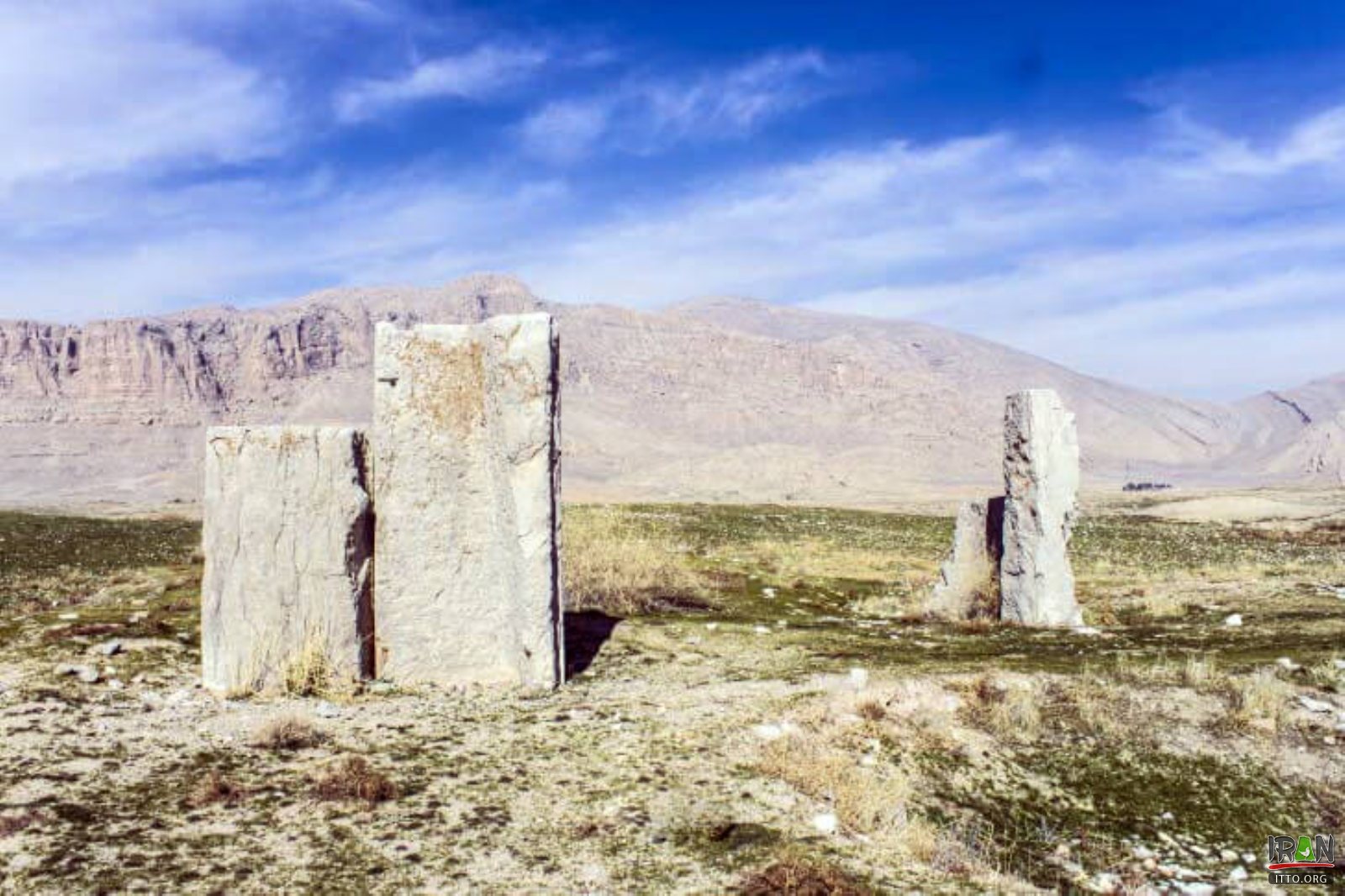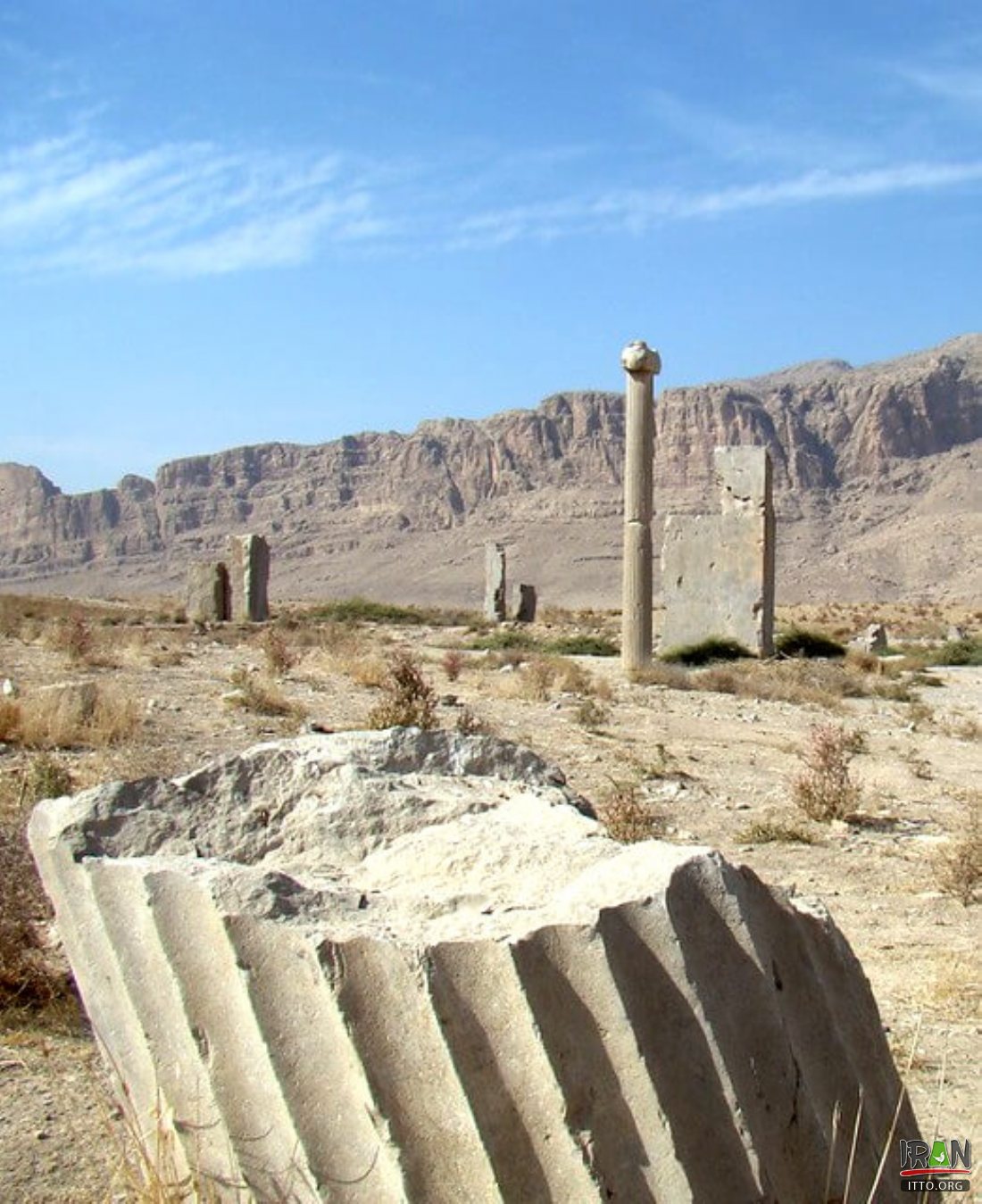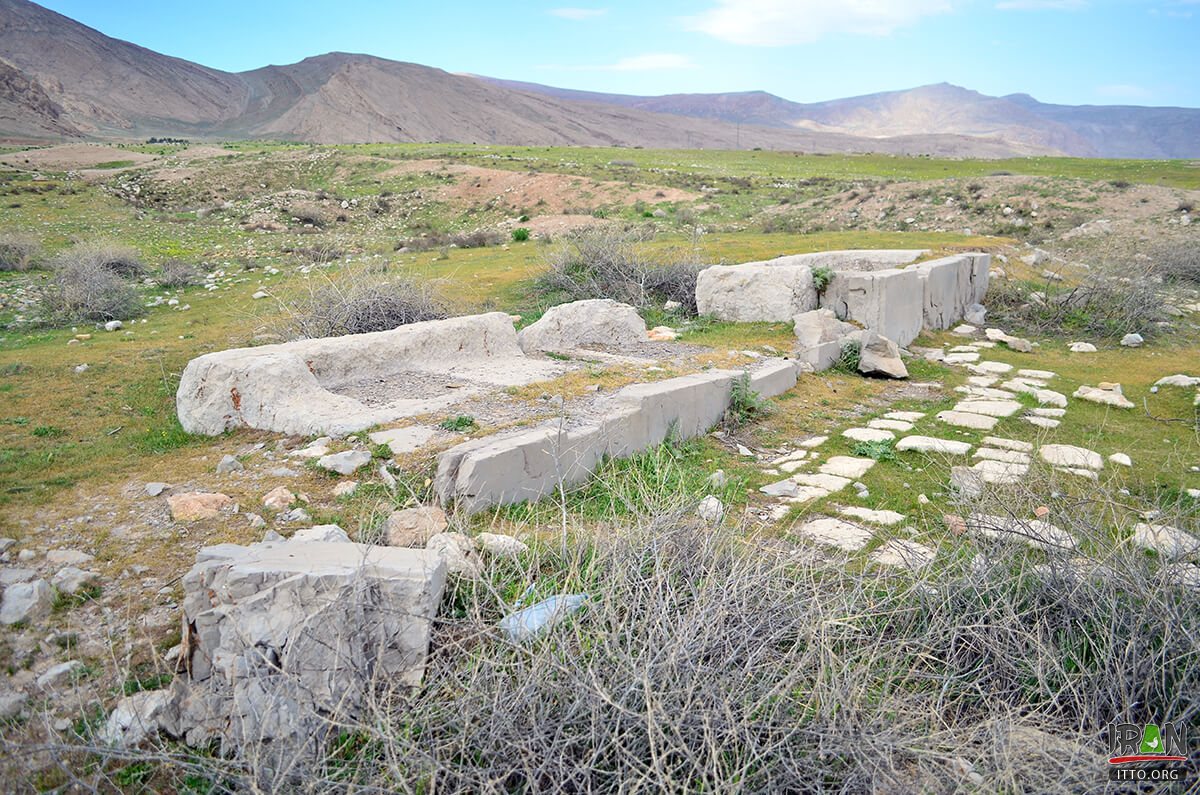Estakhr Iran: Unveiling The Ancient Heart Of Persian Civilization
Step back in time and imagine a city bustling with life, a strategic hub of power and culture that shaped the destiny of an empire. This is the story of Estakhr Iran, an ancient city whose echoes still resonate through the annals of Persian history. Located in the Fars province, just a stone's throw from the iconic Persepolis, Estakhr played a pivotal role in the rise and fall of mighty dynasties, serving as a beacon of civilization for millennia.
From its earliest foundations dating back thousands of years to its prominence during the Achaemenid and Sasanian eras, Estakhr offers a profound glimpse into Persia's ancient civilization. Its historical significance, strategic location, and enduring legacy make it a fascinating subject for anyone eager to explore the rich tapestry of Iranian heritage. Join us as we delve into the remarkable history of Estakhr, uncovering its secrets and understanding its enduring impact.
Table of Contents
- The Enduring Legacy of Estakhr Iran: A Historical Overview
- Estakhr as a Capital: Frataraka Governors and Kings of Persis
- The Rise of Ardashir I and Estakhr's Role in the Sasanian Empire
- The Decline and Resilience: Estakhr After the Arab Conquest
- Archaeological Marvels and Lingering Mysteries of Estakhr
- Estakhr Today: A Glimpse into Iran's Rich Past
- Preserving Estakhr's Heritage for Future Generations
The Enduring Legacy of Estakhr Iran: A Historical Overview
The historical city of Estakhr holds a significant place in the annals of Persian history and culture. Located in Marvdasht County, in the Fars province of Iran, it is one of the most important archaeological sites in the region. Its strategic position, nestled within the Sivand Valley, five kilometers north of Persepolis and 65 kilometers from Pasargadae, made it a natural successor to the grandeur of its more famous neighbors.
Renowned during both the Achaemenid and Sasanian eras, this majestic city's history stretches back far beyond the imperial periods. Archaeological estimates suggest that the ancient city of Estakhr may have been built as early as 4000 BC, indicating a continuous human settlement for millennia. This deep historical root underscores its importance not just as a political center, but as a long-standing cradle of civilization in southwestern Iran.
From Achaemenid Roots to Sasanian Splendor
Estakhr's historical journey is deeply intertwined with the great empires of Persia. It first appears in history as an Achaemenid city, dating back to around 500 BCE. While Persepolis was the ceremonial capital, Estakhr likely served as a significant administrative and economic hub, perhaps even a residential city. After Alexander the Great's destruction of Persepolis in 330 BC, Estakhr truly stepped into the limelight, replacing the old residence city as a primary center of power.
Its flourishing period continued well into the post-Achaemenid era. From the third century BC to the early 3rd century AD, Estakhr thrived as the capital of the Persian Frataraka governors and later, the kings of Persis. This period saw the city solidify its regional dominance, laying the groundwork for its later prominence under the Sasanian Empire. The city's continuity through these transitional periods highlights its inherent resilience and strategic value.
Estakhr's Strategic Location and Early Estimates
The geographical placement of Estakhr was undeniably a key factor in its enduring significance. Situated five kilometers north of Persepolis in southwestern Iran, it stands near the point where the valley opens into the broad plain of Marvdasht. This location provided both defensive advantages and access to fertile lands, making it an ideal site for a major settlement. Historical accounts suggest Estakhr extended from the northern banks of the Kor River to Pasargadae, covering an estimated area of 60 hectares, indicating a truly substantial urban center for its time.
The archaeological evidence, including stony gates, columns, and walls dating back to the Achaemenian period, confirms its ancient origins and grand scale. Many archaeological objects found at the site continue to shed light on the daily lives, religious practices, and artistic achievements of its inhabitants. These findings are crucial for understanding the evolution of Persian society and the intricate connections between its various historical periods, with Estakhr serving as a vital link.
Estakhr as a Capital: Frataraka Governors and Kings of Persis
Following the decline of the Achaemenid Empire and the tumultuous period after Alexander's conquests, Estakhr emerged as a crucial center for the local Persian rulers. It became the capital of the Persian Frataraka governors, a series of local dynasts who asserted varying degrees of autonomy in Persis (Fars) during the Seleucid and Parthian periods. These governors, and later the Kings of Persis, maintained a strong connection to the Achaemenid legacy, often minting coins that depicted their reverence for the ancient Persian kings.
Under their rule, Estakhr flourished, serving not only as an administrative capital but also as a cultural and religious stronghold. This era, spanning from the third century BC to the early 3rd century AD, was vital in preserving Persian identity and traditions in the face of Hellenistic and Parthian influences. The city became a focal point for the local aristocracy and a repository of knowledge and heritage, ensuring that the flame of Persian culture continued to burn brightly, setting the stage for the resurgence of native Persian rule.
The Rise of Ardashir I and Estakhr's Role in the Sasanian Empire
The early 3rd century AD marked a monumental shift in Persian history, and Estakhr Iran was at the very heart of this transformation. It was from this city and district that Ardashir I, the founder of the Sasanian Empire, launched his ambitious campaign to overthrow the Parthians and establish a new, powerful Persian empire. Ardashir's father, Pāpak, was a local ruler in Persis, and upon Pāpak's death, his eldest son initially succeeded him. However, after an unfortunate accident in AD 208, Ardashir replaced him, consolidating his power base in Estakhr.
Ardashir's rise from a local prince in Estakhr to the "King of Kings" of Iran is a testament to the city's strategic importance and the strength of the local Persian nobility. His connection to Estakhr provided him with the necessary resources, loyal followers, and a legitimate claim to the ancient Persian heritage, allowing him to rally support and eventually defeat the Parthian Arsacid dynasty. The city served as his springboard, a powerful symbol of the renewed Persian spirit.
Estakhr's Brief Stint as Sasanian Capital
With Ardashir I's triumph and the establishment of the Sasanian Empire, Estakhr's prestige reached its zenith. It was a prosperous city under the Sasanian Empire and briefly served as its capital from 224 to 226 CE. While the Sasanian capital later moved to Ctesiphon, Estakhr remained an incredibly important city, particularly for its religious significance and its strong ties to the Sasanian royal family's origins. It continued to be a major administrative and religious center, holding a special place in the hearts of the Sasanian rulers.
The Sasanian era saw the construction of remarkable structures in the vicinity of Estakhr, such as the Estakhr Bridge (also known as Hajiabad Bridge) in Marvdasht, Fars province. This bridge is one of the remarkable historical landmarks from the Sasanian era, showcasing the engineering prowess and architectural ambition of the time. The Sasanian period represents a golden age for Estakhr, solidifying its reputation as a cornerstone of Persian civilization and a testament to its enduring importance.
The Decline and Resilience: Estakhr After the Arab Conquest
The fate of Estakhr, like much of Iran, irrevocably changed with the Arab attack on Iran and the Estakhr War in the mid-7th century AD. This period marked the end of the Sasanian Empire and the beginning of Islamic rule in Persia. Estakhr, being a bastion of Sasanian power and Zoroastrianism, faced fierce resistance during the conquest. Historical accounts describe significant battles fought around the city, leading to its eventual capture and decline as a major political center.
The city suffered considerable damage during these conflicts, and its prominence gradually waned. However, even after the war with the Arabs, the "pool" (likely referring to a significant water source or structure) still remained, and Estakhr continued to hold a prominent presence as a base of the Zoroastrian religion. This resilience highlights the deep-rooted cultural and religious significance of the city, which persisted despite political upheaval. It demonstrates that even as its imperial glory faded, its spiritual importance endured.
The Enduring Spirit of Zoroastrianism in Estakhr
Despite the Arab conquest and the gradual Islamization of Iran, Estakhr remained a significant center for Zoroastrianism for centuries. This ancient Persian religion, with its emphasis on good thoughts, words, and deeds, found a strong foothold in Estakhr, even as its followers faced increasing pressure. The city's role as a base for Zoroastrianism underscores its deep historical and cultural layers, showcasing how it served as a sanctuary for traditional Persian beliefs.
However, with the construction of the city of Shiraz, people gradually moved to the new urban center, drawn by new opportunities and the shifting political landscape. This migration contributed to Estakhr's decline as a populous city, leaving behind a rich archaeological site that continues to fascinate historians and archaeologists. The enduring presence of Zoroastrianism in Estakhr, even after its political decline, speaks volumes about the profound cultural identity that defined this ancient Persian heartland.
Archaeological Marvels and Lingering Mysteries of Estakhr
Today, the site of Estakhr Iran is a treasure trove for archaeologists and historians, offering tangible links to Persia's glorious past. The ruins, though less imposing than the grand structures of Persepolis, provide invaluable insights into the city's layout, architecture, and daily life. Key archaeological findings include:
- Stony Gate and Columns: Remnants of a stony gate and columns dating back to the Achaemenian period confirm the city's ancient origins and monumental scale. These structures hint at the grandeur that once defined Estakhr.
- Walls and Foundations: Extensive walls and foundations indicate a well-planned urban center, with areas dedicated to residential, administrative, and religious functions.
- Archaeological Objects: Numerous artifacts, including pottery, coins, and various tools, have been unearthed, providing a detailed picture of the economic activities, trade networks, and artistic expressions of Estakhr's inhabitants through different eras.
- Sasanian Structures: Beyond the city limits, the Estakhr Bridge (Hajiabad Bridge) stands as a remarkable Sasanian structure, showcasing the architectural and engineering advancements of that period.
Despite the extensive research, many mysteries surrounding Estakhr remain. What were the precise functions of certain buildings? How did its population fluctuate over the millennia? Continuous archaeological excavations and scholarly research, often involving institutions like the Circle of Ancient Iranian Studies at the School of Oriental and African Studies, University of London, UK, are crucial in unraveling these enigmas and piecing together the full story of this remarkable city.
Estakhr Today: A Glimpse into Iran's Rich Past
While the ancient city of Estakhr is primarily an archaeological site, its legacy continues to influence modern Iran. Located five kilometers away from Persepolis and 65 kilometers from Pasargad, inside the Sivand Valley, in the vicinity of Marvdasht city, Fars province, it remains an accessible and important historical destination for those exploring Iran's rich heritage. The site itself, though in ruins, evokes a powerful sense of history, allowing visitors to walk on the same ground where kings and commoners once trod.
It's important to note that "Estakhr" also refers to a neighborhood in Tehran, central Iran, which has an elevation of 1,057 meters and is situated nearby Aghdasieh and Hashem Abad. This modern namesake, however, should not be confused with the ancient historical city of Estakhr Iran in Fars province, which is the focus of our discussion. The ancient site serves as a poignant reminder of the ebb and flow of civilizations, and the enduring power of history to shape national identity.
Preserving Estakhr's Heritage for Future Generations
The preservation of ancient sites like Estakhr is paramount for understanding human history and cultural evolution. The ruins of Estakhr Iran, though weathered by time and conflict, represent a tangible link to a glorious past, offering invaluable insights into the Achaemenid, Parthian, and Sasanian periods. Efforts to protect and study this site are crucial for future generations to learn about the complexities of ancient Persian civilization.
International and local archaeological teams continue their dedicated work at Estakhr, meticulously excavating, documenting, and conserving its remains. These endeavors not only unearth new discoveries but also contribute to a broader understanding of Iranian art, civilization, archaeology, anthropology, society, race, history, and culture. The story of Estakhr is a powerful narrative of human resilience, innovation, and the cyclical nature of empires, making its preservation a global responsibility. It stands as a silent testament to the grandeur of a bygone era, urging us to remember and learn from the past. #Iran #PrayForIran #Peace #NoWar #Love ️覆
Conclusion
From its deep ancient roots stretching back to 4000 BC, through its flourishing as a capital under the Frataraka governors and Kings of Persis, to its pivotal role in the rise of the Sasanian Empire and its enduring significance for Zoroastrianism, Estakhr Iran stands as a monumental testament to Persian civilization. Located strategically near Persepolis, this ancient city, though now largely in ruins, tells a compelling story of power, resilience, and cultural continuity. Its archaeological remains continue to unveil secrets, painting a vivid picture of a city that was once the beating heart of an empire.
The journey through Estakhr's history is a journey through the very essence of ancient Iran. We encourage you to explore more about this incredible site, whether through further reading, academic resources, or perhaps even planning a visit to the Fars province to witness its historical grandeur firsthand. Share your thoughts in the comments below – what aspect of Estakhr's history do you find most fascinating? Your engagement helps us all appreciate the profound heritage of Iran.

Estakhr Ancient City (Takht-e-Tavoos) Photo Gallery - Iran Travel and

Estakhr Ancient City (Takht-e-Tavoos) Photo Gallery, Iran Tourism and

Estakhr Ancient City (Takht-e-Tavoos) Photo Gallery, Iran Tourism and